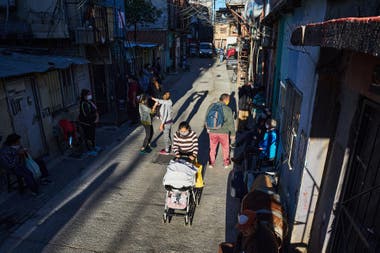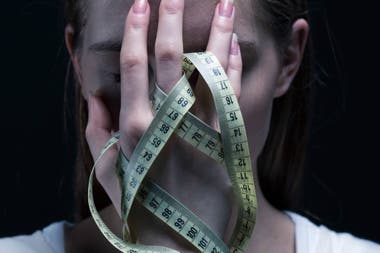Crises are often fertile ground to establish changes in habits, either to adapt to new conditions or due to awareness of a reality that was always there and suddenly becomes visible. In times of pandemic, the majority are at home and the gaze on what surrounds us 24 hours a day sharpens; This undoubtedly includes what we consume and the waste we generate. At
Environment Day
, we bring proposals to
reduce, reuse and recycle
quarantined, but also for
reject, repair, rethink, recirculate
and many other rights that adhere to the idea of building a circular economy that is becoming increasingly urgent.
1. Reduce and recirculate, two sides of the same coin
-
To reuse:
Giving or donating, bartering, buying and selling used are practices that help to avoid acquiring new products unnecessarily and at the same time extending their useful life. This is not the time to take bags out to the street “so that someone can take what they need” or to meet to do this type of “transaction”, which is why there are already multiple WhatsApp groups among neighbors, groups in social networks that exchange according to the proximity and NGOs like Quiero Ayudar that offer a map that indicates nearby points according to what you want to donate. There is, for example, a Facebook group that, under the name of Gratifrascos, was replicated in different parts of the country, through which used jars are offered and requested to be reused, many times, in private ventures or social actions.
See this post on Instagram
CIRCULAR ECONOMY. Our economy is based on a LINEAR production system where it is extracted, produced, consumed and discarded. Thus we are consuming EVERYTHING THERE IS without leaving a space for the natural REGENERATION of RESOURCES and ECOSYSTEMS. And, to top it off, we are filling every corner [R] of shit made of timeless and polluting materials ??[R]?[R] . We already know that this is not feasible in the long -and at this short-term height. In other words, we ran out of RESOURCES but we are full of WASTE. What if instead of seeing them as garbage we start to see them as new resources? . The idea is to leave the LINEAR resource-product-waste model and move to a CIRCULAR model of resource-product-resource. . The objective is to reduce both the entry of virgin materials and the generation of waste and that the product stays within the system as long as possible, leading to the REPAIR and REGENERATION of natural resources. It requires a redesign of the products, which are designed “from the cradle to the cradle”, which are based on biomimicry and takes up principles of the blue economy, the green econ, the performance econ and regenerative design. The aim is for products to have a longer useful life, to think of WATERFALLS where they have new possibilities of secondary uses, which are REPAIRABLE and can be re-entered as recycled resources, ultimately. It plans to move from CONSUMPTION to USE, for example, stop BUYING new products to RENT them and that when they end their useful life, they return to their producers and they can make the most of it. It promotes the transition towards an energy matrix based on renewable energy. It aims to provide an environmental solution through the economy. That the human being ceases to be a threat to himself and the [R] and become an active subject to guarantee its conservation. Begin to see the environment as a source of income and not as an instrument, as until now. Not only use it, but PROTECT it, because we need to live on it. #economiacircular #rethink #economialineal #capitalism #recycle #repair #reduce # 3r
“We are locked up, we have the resources we have, we try to interrelate what we are using: we do not buy garbage bags, we use what there is, for example. We really do not need so much,” says Agustina Legasa, who carries out her “imperfect activism “-according to self-defined- by the atmosphere in the Blonda Verde Instagram account. “And what we do not use anymore,” she adds, “that turns and does not go to recycle. This idea aims to revalue what we have. What for us is garbage for another is a resource.” In this sense, one point to keep in mind is that with the proliferation of delivery, the use of plastic trays has increased, which are useful for serving food in popular pots and neighborhood canteens: bringing them together – always clean and dry – is a good habit to acquire this quarantine.
-
Repair:
also associated with reuse, it is a practice that, fostered by the context, gradually seems to be recovering. It is another fundamental “r” for this circular system that aims to extend the usefulness of things. The Repairers Club is an initiative of the NGO Article 41 that promotes reparation and today from 15 to 19 it will carry out the “Repair Fest”, an online meeting (youtube.com/clubdereparadores) to share experiences on community reparation and the launch from a guide to repair services.
2. What to do with our “garbage”
- Reducing consumption, reusing or recirculating what we no longer use is fed back with the awareness of what we do consume and generate.
Identify our “trash”
It is a great step to take responsibility for what to do with it and decide on more responsible consumption. “Separating waste is a habit that once adopted there is no going back,” says Máximo Mazzocco from the NGO Eco House and explains that it is as simple as organizing it into three types: recyclable (cardboard, paper, plastic, metal, etc.) They are for recyclers, organic (banana peel, tea bags, almost all vegetables except organic waste from animal sources) to make compost and non-recyclables which is about 10% of the household garbage (dirty box of pizza, diapers, etc.). - Due to the new mandatory social isolation protocols,
the recycling system in most of the country is conditioned
. There is no unified information in this regard since the treatment and collection of recyclables depends on each municipality. In the City of Buenos Aires, although the green points are without attention and the urban recyclers are not collecting, the material deposited in the hoods and green points is being collected by the Buenos Aires Government. In the province of Buenos Aires, there are 100 cooperatives that continue to work with reduced personnel within the framework of the system of each municipality: in La Plata the blue dots work, in Mar del Plata there is differentiated collection on Tuesday and Friday, and other jurisdictions have circuits door-to-door recovery or green points, as reported by the Provincial Waste Office. - The same thing happens in the different provinces of the country,
each municipality with its logic and system
, more or less effective. “That is why we recommend saving recyclables and contacting the closest cooperatives to see where they want us to leave them. It is a time when we have to adapt. It only takes us to google: if there is no cooperative in my municipality there is insurance next door, “advises Mazzocco. “If you see a retriever ask him where he works, what material he retrieves and where to bring them closer,” adds the voice behind Blonda Verde, who along with other sustainable influencers on Instagram developed under the hashtag # GuíadeCuarentenaSustainable and the account We like green, 20 videos with recommendations on separation, compost, sustainable feeding, sustainable cleaning, among others.
- If of
gather
it’s about, dobottles of love
It can be practical and even a healthy task to share with the children of the house: it consists of filling bottles or drums with plastic wrappers and bags that could not otherwise be recycled. Once they are full, they are delivered to the NGO with the same name, which has different delivery points in the country. In alliance with a company, they give new life to this waste by producing plastic wood.
3. Composting: now or never
- He
home composting
It adds several pluses to the issue: it reduces the transport of waste and therefore the emissions of greenhouse gases, it reduces the transport costs that such waste would generate, it reduces the chances of recyclables becoming contaminated and an organic amendment is produced to use in own pots or from neighbors and family. “With composting there are no limitations at the time of COVID-19 because there is no other actor involved other than us. Thinking that approximately 50% of domestic waste in Argentina is organic, it really is a recommended option to reduce the impacts of waste that we generate at home “, recommends the City’s Urban Hygiene Observatory. -
How to start?
You only need a container that allows air to enter from above and liquids to exit through the base, wet material (remains of fruits and vegetables), dry material (street leaves, cardboard or paper), and two bundles of soil per only time to add microorganisms and help start decomposition.The key:
stir twice a week and always keep the balance between how dry and moist it gets.
4. Towards more responsible consumption
-
A friendlier consumption with the planet:
menstrual cup, bamboo toothbrushes and solid shampoo are some examples of new products that are gradually taking place in the market. -
Avoid certain products:
everything that is disposable or unnecessary like straws. The film paper, for example, can be replaced with wraps made from beeswax that are available as bee’s wrap and are reusable. Similarly, there is a trend that is increasingly installed that proposes shopping with the tupper itself: with all the gourmet restaurants open it can be implemented without problems to order without plastic included. -
Consume local:
Today more than ever, buying bulk and / or refillable products as well as opting for returnable bottles are other recommendations.
As in the previous links -reduce, reuse, recycle, repair- towards
a circular economy
, each step requires, assimilating and acquiring new habits. Proposing all together is not the best idea to achieve change, but rather incorporating them little by little, prioritizing common sense and having it more at hand.
ALSO
.
Publicado en el diario La Nación




